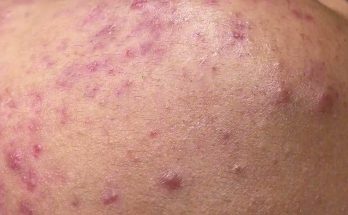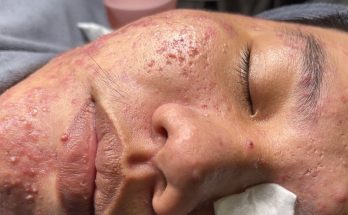People should avoid popping, squeezing, or picking blackheads. Instead, safe removal of blackheads often involves topical treatments or extraction by a healthcare provider.
Acne is a very common inflammatory skin condition, which commonly starts at the time of puberty and can continue through life. It most commonly affects the face, as well as the back, shoulders, upper arms, and chest. There are several types of acne, one of which is blackheads.
Blackheads are one of the most misunderstood types of acne, as people tend to confuse them with dirt under the skin. As a result, they are often clearing blackheads in the wrong way. This not only fails to remove the blackheads, but it can also make them worse, and they can escalate into different skin infections.
While blackheads do not cause serious problems on their own, they cause psychological differences such as depression, anxiety, and poor self-image.
This article will advise how to remove blackheads. Medical News Today has also sourced a range of video content to help you regain smooth, clear skin.
Fast facts on blackhead removal:
Here are some key points about acne.
- According to the American Academy of Dermatology, acne affects as many as 50 million people in the United States (U.S.) each year.
- Girls aged 14 to 17 years and boys aged 16 to 19 years are most commonly affected by acne, though it can occur at any age.
- People should avoid popping, squeezing, or picking at blackheads.
- Gentle cleansing with dedicated chemical soaps or lotions is the most effective way to clear blackheads.

Often misunderstood as trapped dirt, blackheads are actually small deposits of melanin, the pigment that darkens skin. They are also known as comedones.
The pigment has turned brown due to being exposed to oxygen. This happenes as a result of open pores in the skin.
Making the distinction between trapped dirt and blackheads is the first step to removing them.
Learn More About Acne
People with blackheads should avoid popping, squeezing, rubbing, touching, or picking at affected areas.
Not all acne is treated in the same way. To treat blackheads, a healthcare provider may recommend over-the-counter (OTC) or prescription medications depending on a particular situation. These can be applied topically, or directly to the skin.
Topically applied therapy for people affected by mild acne and blackheads may include the use of:
- benzoyl peroxide
- antibiotics
- retinoids
- salicylic acid
- sulfur
Remedies may be purchased in the form of gels, lotions, cream, soaps, or pads.
In some cases, a healthcare provider may recommend extraction, in which they will manually remove blackheads with special tools called comedone extractors.
Here is a video of Dr. Lisa Benest, a dermatologist based in Los Angeles, demonstrating how a comedone extractor works.
For some women, the use of oral contraceptives, low-dose corticosteroids, or spironolactone may improve hormonally driven acne, even in mild cases.
Washing the face correctly can spare a person with blackheads the need to visit a dermatologist.
It is often the case that cleaning the skin at home is the best first-line treatment for acne and blackheads. Good skin hygiene can help to keep the pores unclogged.
However, over-scrubbing can do more harm than good. Here are the steps for washing your face in a way that will not encourage the development of more blackheads and further skin infections.
To prepare for cleanse, make sure you have:
- hand soap
- makeup removal solution for those who wear makeup
- a cream with moisturizing capabilities for people with dry skin
- mild cleanser that is marked soap-free
- foaming cleanser containing alpha-hydroxy acid (AHA) for individuals with oily skin
- a cleansing solution that contains salicylic acid or benzoyl peroxide for acne-prone skin
- a face towel
Once you have the products tailored to your skin type, take the following steps each night:
- Wash your hands to keep them free of bacteria.
- Remove any makeup you may be wearing using makeup remover or wipes.
- Make sure water temperature is warm but moderate.
- Apply the type of cleanser best suited to your skin. Gently massage the cleanser in a circular motion and be sure to rotate your hands outwards from the center of your face for at least one minute.
- Focus on the nose and forehead, as these areas of the face are particularly prone to sebum, or oil, production.
- Be sure to cleanse the jawline and hairline.
- Rinse the cleanser from your face by splashing your face with warm water.
- Dab the face with a clean hand towel, patting the skin dry and being sure not to rub or push down too hard.
- Apply any prescribed or OTC lotions, creams or gels after this cleaning process.
- Repeat this process twice daily for the best results.
This helpful video from physician’s assistant Erin Jensen demonstrates the above steps.
There are many ways to clean blackheads incorrectly. People often do not consider these steps when cleansing the face.
Be sure to avoid:
- vigorous cleaning and scrubbing of the skin
- very hot or very cold water when washing
- the use of toners, exfoliants, astringents, strong soaps, or scrubbing pads, unless told otherwise
- popping, squeezing, rubbing, touching, or picking at affected areas
- sunburn or tanning
- the use of pore-clogging skin care products
A gentle and well-considered facial cleansing process is not the only way to keep blackheads at bay or reduce them if they appear.
The following measures can also help to preserve clear and healthful skin:
- Shampoo the hair frequently.
- Remove all make-up in the evening before going to bed.
- Consider using oil-free skin care products, including sunscreen.
- For people with dry skin, fragrance-free, water-based emollients are recommended.
- Take care when shaving.
Speak with a healthcare provider to be sure you are using products suitable for your particular skin type.
Blackheads can develop into more severe acne as a result of the following factors:

- overactive oil glands
- genes
- hormonal status
- menstruation
- psychological issues such as stress
- certain medications
- pore-clogging skin care products
- pressure from sports helmets, sports equipment, tight-fitted collars, and other sources of rubbing
- exposure to pollution or humid temperature conditions
- sweating
- squeezing or picking at skin lesions
- excessive or hard skin scrubbing
Bear these factors in mind when trying to remove blackheads. If the cause is a factor such as stress, dealing with that cause can often be the best way to clear blackheads.
Blackheads do not cause serious health problems, but they can affect confidence and self-image. Cleaning them in the right way can also prevent the development of more severe skin infections.


